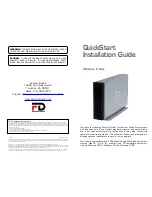
Managing the System
Disk Management
Cisco Small Business NSS300 Series Smart Storage Administration Guide
132
3
# fdisk /dev/sdb
STEP 8
Format the partition using the following command:
# mkfs.ext3 /dev/sdb1
STEP 9
Mount the file system using these two commands:
# mkdir /mnt/iscsi
# mount /dev/sdb1 /mnt/iscsi/
STEP 10
You can test the I/O speed using the following command:
# hdparm -tT /dev/sdb1
STEP 11
Below are some “iscsiadm” related commands:
Discover the targets on the host:
# iscsiadm -m discovery --type sendtargets --portal HOST_IP
Login to a target:
# iscsiadm –m node --targetname THE_TARGET_IQN --login
Logout a target:
# iscsiadm –m node --targetname THE_TARGET_IQN --logout
Delete a target:
# iscsiadm –m node --op delete --targetname THE_TARGET_IQN
Virtual Disk
The Virtual Disk (VD) is based on iSCSI technology, which makes it become the
stack master and can connect to the other stack targets. With the VD, you can
expand the capacity of your NAS and use it as the system disk volume(s). In
addition, you can create disk shares and use them for data exchange, storage and
backup, just like the local disk shares.
NOTE
This function and its content is only applicable on some NAS models.
Each virtual disk drive will be recognized as a single logical volume in the local
system.
















































